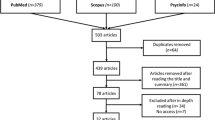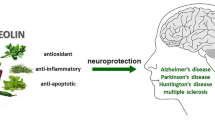Abstract
This study presents a systematic comparison between Centella asiatica (L.) Urb., Apiaceae, and Bacopa monnieri (L.) Wettst., Plantaginaceae, two herbs known for their neuroprotective properties against Alzheimer's and Parkinson's disease. The objective was to determine which herb is more effective in protecting memory. Preliminary extracts and triterpenoid-enriched extracts of both herbs were prepared and analyzed using HPTLC and HPLC. In vitro studies were conducted to assess neuroprotective potential, and an in vivo study using a scopolamine-induced Alzheimer's model in rats validated the in vitro findings. Key biochemical parameters were measured, including acetylcholinesterase enzyme, antioxidant enzymes, and lipoxygenase enzyme levels. The results showed that standardization significantly increased the levels of asiaticosides and bacosides in both C. asiatica and B. monnieri extracts, leading to improved neuroprotective efficacy. In the anti-Alzheimer's studies, bacosides-enriched B. monnieri extracts demonstrated greater neuroprotective activity than C. asiatica extracts, both in vitro and in vivo. Interestingly, B. monnieri extracts showed lower neuroprotective activity in vitro but higher activity in vivo, suggesting that their effectiveness is enhanced through metabolic transformations when consumed orally. On the other hand, C. asiatica extracts exhibited lower neuroprotective activity in in vivo studies. Based on these findings, it can be concluded that B. monnieri demonstrates superior in vivo neuroprotective effects compared to C. asiatica. It effectively prevents neuronal damage caused by elevated levels of enzymes such as acetylcholinesterase, lipoxygenase, and oxidative stress. These results suggest that B. monnieri has the potential to enhance memory by safeguarding against neurodegenerative processes.
Graphical Abstract




Similar content being viewed by others
References
Abdul Manap AS, Vijayabalan S, Madhavan P (2019) Bacopa monnieri, a neuroprotective lead in Alzheimer disease: areview on its properties, mechanisms of action, and preclinical and clinical studies. Drug Target Insights 13:1177392819866412. https://doi.org/10.1177/1177392819866412
Aguiar S, Borowski T (2013) Neuropharmacological review of the nootropic herb Bacopa monnieri. Rejuv Res 16:313–326. https://doi.org/10.1089/rej.2013.1431
Arora R, Kumar R, Agarwal A (2018) Comparison of three different extracts of Centella asiatica for anti-amnesic, antioxidant and anticholinergic activities: in vitro and in vivo study. Biomed Pharmacother 105:1344–1352. https://doi.org/10.1016/j.biopha.2018.05.156
Ashcroft T, Simpson JM, Timbrell V (1988) Simple method of estimating severity of pulmonary fibrosis on a numerical scale. J Clin Pathol 41:467–470. https://doi.org/10.1136/jcp.41.4.467
Babitha MP, Prakash HS, Shetty HS (2006) Induction of lipoxygenase in downy mildew resistant seedlings of pearl millet in response to inoculation with Sclerospora graminicola. Int J Agr Biol 8:560–564
Bhandari P, Sendri N, Devidas SB (2020) Dammarane triterpenoid glycosides in Bacopa monnieri: a review on chemical diversity and bioactivity. Phytochem 172:112276. https://doi.org/10.1016/j.phytochem.2020.112276
Borthakur A, Bhat BG, Ramadoss CS (1987) The positional specificities of the oxygenation of linoleic acid catalyzed by two forms of lipoxygenase isolated from Bengal gram (Cicer arietinum). J Biosci 11:257–263. https://doi.org/10.1007/BF02704676
Brimson JM, Brimson S, Prasanth MI (2021) The effectiveness of Bacopa monnieri (Linn.) Wettst. as a nootropic, neuroprotective, or anti depressant supplement: analysis of the available clinical data. Sci Rep 11:596–602. https://doi.org/10.1038/s41598-020-80045-2
Chaudhari KS, Tiwari NR, Tiwari RR, Sharma RS (2017) Neurocognitive effect of nootropic drug Brahmi (Bacopa monnieri) in Alzheimer’s disease. Ann Neurosci 24:111–122. https://doi.org/10.1159/000475900
Deore SL, Khadabadi SS, Chittam KP (2009) Properties and pharmacological applications of saponins. Pharmacologyonline 2:61–84
De Ture MA, Dickson DW (2019) The neuropathological diagnosis of Alzheimer’s disease. Mol Neurodegener 14:123–132. https://doi.org/10.1186/s13024-019-0333-5
Doungue HT, Kengne APN, Kuate D (2018) Neuroprotective effect and antioxidant activity of Passiflora edulis fruit flavonoid fraction, aqueous extract, and juice in aluminum chloride-induced Alzheimer’s disease rats. Nutrire 43:23–30. https://doi.org/10.1186/s41110-018-0082-1
Ellman GL, Courtney KD, Andres V (1961) A new and rapid colorimetric determination of acetylcholinesterase activity. Biochem Pharmacol 7:88–95. https://doi.org/10.1016/0006-2952(61)90145-9
Gray NE, Alcazar Magana A, Lak P (2018) Centella asiatica- Phytochemistry and mechanisms of neuroprotection and cognitive enhancement. Phytochem Rev 17:161–194. https://doi.org/10.1007/s11101-017-9528-y
Haleagrahara N, Ponnusamy K (2010) Neuroprotective effect of Centella asiatica extract (CAE) on experimentally induced Parkinsonism in aged Sprague-Dawley rats. J Toxicol Sci 35:41–47. https://doi.org/10.2131/jts.35.41
Kakkar P, Das B, Viswanathan PN (1984) A modified spectrophotometric assay of superoxide dismutase. Indian J Biochem Biophys 21:130–132. http://nopr.niscpr.res.in/handle/123456789/19932
Kanofsky JR, Axelrod B (1986) Singlet oxygen production by soybean lipoxygenase isozymes. J Biol Chem 261:1099–1104. https://pubmed.ncbi.nlm.nih.gov/3080416
Khan RA, Khan MR, Sahreen S (2012) Brain antioxidant markers, cognitive performance and acetylcholinesterase activity of rats: efficiency of Sonchus asper. Behav Brain Funct 8:21–28. https://doi.org/10.1186/1744-9081-8-21
Kraeuter AK, Guest PC, Sarnyai Z (2019) The Y-maze for assessment of spatial working and reference memory in mice. Methods Mol Biol 1916:105–111. https://doi.org/10.1007/978-1-4939-8994-2_10
Kulkarni R, Girish KJ, Kumar A (2012) Nootropic herbs (Medhya Rasayana) in Ayurveda: an update. Pharmacogn Rev 6:147–153. https://doi.org/10.4103/0973-7847.99949
Kumar A, Dogra S, Prakash A (2009) Neuroprotective effects of Centella asiatica against intracerebroventricular colchicine-induced cognitive impairment and oxidative stress. Int J Alzheimers Dis 2009:972178. https://doi.org/10.4061/2009/972178
Kunjumon R, Johnson AJ, Baby S (2022) Centella asiatica: secondary metabolites, biological activities and biomass sources. Phytomed Plus 2:100176. https://doi.org/10.1016/j.phyplu.2021.100176
Limpeanchob N, Jaipan S, Rattanakaruna S (2008) Neuroprotective effect of Bacopa monnieri on beta-amyloid-induced cell death in primary cortical culture. J Ethnopharmacol 120:112–117. https://doi.org/10.1016/j.jep.2008.07.039
Majumdar S, Basu A, Paul P, Halder M, Jha S (2013) Bacosides and neuroprotection. In: Ramawat K, Mérillon JM (eds) Natural Products. Springer, Berlin, Heidelberg. Pp. 3639–3660. https://doi.org/10.1007/978-3-642-22144-6_157
Mathew M, Subramanian S (2014) In vitro screening for anti-cholinesterase and antioxidant activity of methanolic extracts of Ayurvedic medicinal plants used for cognitive disorders. PLoS One 9:e86804. https://doi.org/10.1371/journal.pone.0086804
Mishra K, Ojha H, Chaudhury N (2012) Estimation of antiradical properties of antioxidants using DPPH assay: critical review and results. Food Chem 130:1036–1043. https://doi.org/10.1016/j.foodchem.2011.07.127
Nandy S, Mukherjee A, Pandey DK, Dey A (2020)Bacopa monnieri: the neuroprotective elixir from the east—phytochemistry, pharmacology, and biotechnological improvement. In: Singh J, Meshram V, Gupta M (eds) Bioactive Natural products in Drug Discovery. Springer, Singapore, pp. 97–126. https://doi.org/10.1007/978-981-15-1394-7_2
Orhan IE (2012) Centella asiatica (L.) Urban: from traditional medicine to modern medicine with neuroprotective potential. Evid Based Compl Alt Med 2012:946259. https://doi.org/10.1155/2012/946259
Qureshi S, Solanki H (2020) FT-IR analysis of the crude sample of Centella asiatica (L.) Urb leaves. Vidya J Gujarat Univ 1:34–36
Ramasamy S, Chin SP, Sukumaran SD (2015) In silico and in vitro analysis of bacoside A aglycones and its derivatives as the constituents responsible for the cognitive effects of Bacopa monnieri. PLoS One 10:e0126565. https://doi.org/10.1371/journal.pone.0126565
Sarokte AS, Rao MV (2013) Effects of Medhya Rasayana and Yogic practices in improvement of short-term memory among school-going children. Ayu 34:383–389. https://doi.org/10.4103/0974-8520.127720
Shinomol GK, Muralidhara BMM (2011) Exploring the role of “Brahmi” (Bacopa monnieri and Centella asiatica) in brain function and therapy. Recent Pat Endocr Metab Immune Drug Discov 5:33–49. https://doi.org/10.2174/187221411794351833
Shukurova M, Myint D, San Yi (2021) Morphological description and ethnobotanical review of the orphan crop Myin-Hkwa (Centella asiatica L.) from Myanmar. Front Sustain Food Syst 5:680862. https://doi.org/10.3389/fsufs.2021.680862
Singh HK (2013) Brain enhancing ingredients from Āyurvedic medicine: quintessential example of Bacopa monniera, a narrative review. Nutrients 5:478–497. https://doi.org/10.3390/nu5020478
Son IH, Park YH, Lee SI, Yang HD, Moon HI (2007) Neuroprotective activity of triterpenoid saponins from Platycodi radix against glutamate-induced toxicity in primary cultured rat cortical cells. Molecules 12:1147–1152. https://doi.org/10.3390/12051147
Uabundit N, Wattanathorn J, Mucimapura S (2009) Cognitive enhancement and neuroprotective effects of Bacopa monnieri in Alzheimer’s disease model. J Ethnopharmacol 127:26–31. https://doi.org/10.1016/j.jep.2009.09.056
Uddin MS, Mamun AA, Hossain MS (2016) Exploring the effect of Phyllanthus emblica L. on cognitive performance, brain antioxidant markers and acetylcholinesterase activity in rats: promising natural gift for the mitigation of Alzheimer’s disease. Ann Neurosci 23:218–229. https://doi.org/10.1159/000449482
Acknowledgements
The authors are thankful to Government funding agencies Rajiv Gandhi Science and Technology Commission (RGSTC), Mumbai, India, and Department of Science and Technology (DST-SYST), Government of India, New Delhi for providing grants for the present research work.
Funding
The present research work was funded by the Government funding agencies Rajiv Gandhi Science and Technology Commission (RGSTC), Mumbai, India and Department of Science and Technology (DST-SYST), Government of India, New Delhi.
Author information
Authors and Affiliations
Contributions
SLD: experimental design, investigation, conceptualization, methodology; AAK: performed experiment, data collection, formal analysis, writing original draft; BAB: visualization, formal analysis, and manuscript writing, review, and editing; SSK: writing, review and editing of manuscript; BAS: performed experiment, editing of final manuscript. All authors have read and approved the manuscript. All data were generated in-house, and no paper mill was used. All authors agree to be accountable for all aspects of work ensuring integrity and accuracy.
Corresponding author
Ethics declarations
Ethical Approval
The animal studies carried out in present research work were approved by the Institutional Animal Ethic Committee (IAEC), Government College of Pharmacy, Amravati.
Supplementary Information
Below is the link to the electronic supplementary material.
Rights and permissions
Springer Nature or its licensor (e.g. a society or other partner) holds exclusive rights to this article under a publishing agreement with the author(s) or other rightsholder(s); author self-archiving of the accepted manuscript version of this article is solely governed by the terms of such publishing agreement and applicable law.
About this article
Cite this article
Deore, S.L., Kide, A.A., Baviskar, B.A. et al. Memory Protecting Herbs: Centella asiatica and Bacopa monnieri in the Fight Against Alzheimer's Disease. Rev. Bras. Farmacogn. 33, 1263–1273 (2023). https://doi.org/10.1007/s43450-023-00455-x
Received:
Accepted:
Published:
Issue Date:
DOI: https://doi.org/10.1007/s43450-023-00455-x




